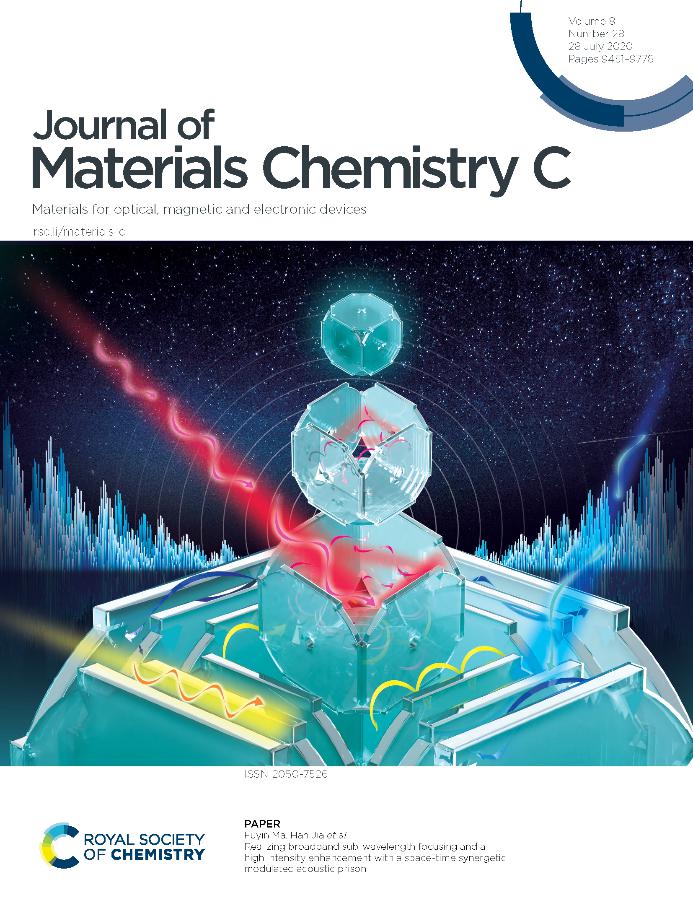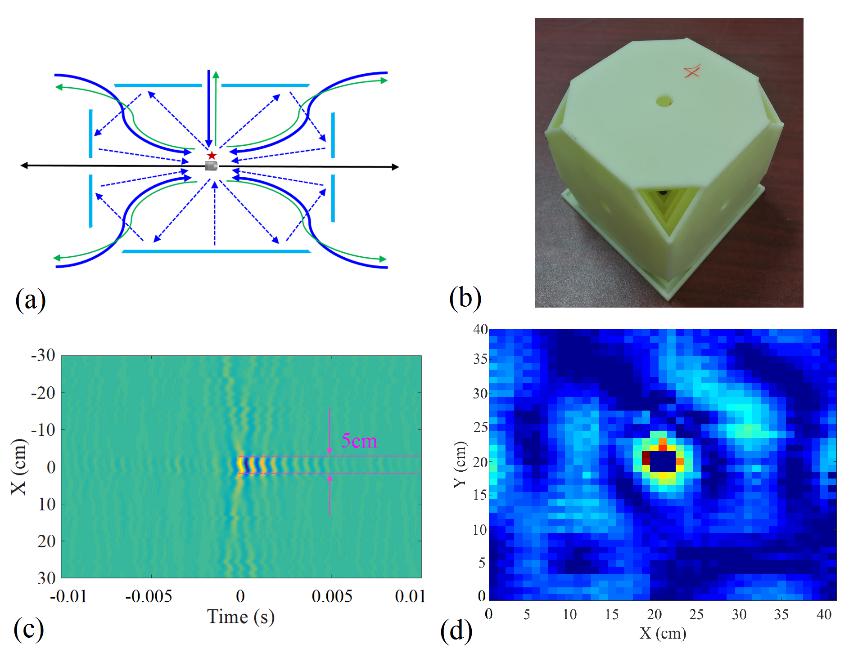Acoustic focusing presents essential value in applications, including but are not limited to medical devices, industrial production, and detection methods. However, due to the diffraction limit in homogeneous medium, the focal size of waves depends on the operating wavelength, wherein the focal diameter could not be smaller than half the wavelength. Therefore, the focal size is large in low-frequency ranges, which is defective in engineering applications. The rapid development of acoustic metamaterials in recent years has prompted studies of using metamaterials to manipulate sound waves, achieving sub-wavelength focusing.
Recently, researchers from the Institute of Acoustics of the Chinese Academy of Sciences and Xi'an Jiaotong University realized a broadband sub-wavelength focusing and a high sound intensity enhancement using an acoustic prison.
The acoustic prison referred to a sub-wavelength metamaterial reflection cavity surrounded by rigid walls with some openings, which could provide a space regulation to the sound field. By employing a time-reversal method to focus the sound and arranging an acoustic prison at the focal position during the convergence stage, broadband sub-wavelength focusing with a focal size was equal to the inner size of the prison and was much smaller than that of the operating wavelength.
Theoretically, the time-reversal focusing process is equivalent to providing a time manipulation to the sound field, which constitutes a space-time synergetic manipulation system together with an acoustic prison for space manipulation.
In the proposed system, most of the waves entering the prison were multi-reflected by the cavity walls and trapped in the cavity much like a prisoner, in order to form a high acoustic intensity region. The formation of such high sound intensity regions depended on the synergetic superposition of cavity resonance and multiple reflections. The regions and the resonance sound field participated in the focus construction to enhance the sound intensity inside the prison and created subwavelengths outside at frequencies around the resonant frequency of the cavity. The multiple reflections of the prison walls determined both the characteristics of the broadband focusing effect in the prison and the stable focal size under frequency change.
In addition, by using multi-level prison structures to increase the effective acoustic reflection area of the walls, the focused sound signals could be further improved.
The research, published in the international academic journal named Journal of Materials Chemistry C and selected to be featured on the front cover, was supported by the National Natural Science Foundation of China.

Figure 1. Front cover of Journal of Materials Chemistry C. (Image by IACAS)

Figure 2. (a) Schematic diagram of the concept for sub-wavelength focusing based on the time-reversal experiment and the acoustic prison; (b) a photo of the acoustic prison sample fabricated using 3D printing; (c) the linear focusing measurement result; (d) The planar sound distribution around the focus center. (Image by IACAS)
Reference:
MA Fuyin, CHEN Jianyu, WU Jiuhui, JIA Han. Realizing broadband sub-wavelength focusing and a high intensity enhancement with a space-time synergetic modulated acoustic prison. Journal of Materials Chemistry C, 2020, 8, 9511-9519. DOI: 10.1039/D0TC01984D.
Contact:
ZHOU Wenjia
Institute of Acoustics, Chinese Academy of Sciences, 100190 Beijing, China
E-mail: media@mail.ioa.ac.cn


